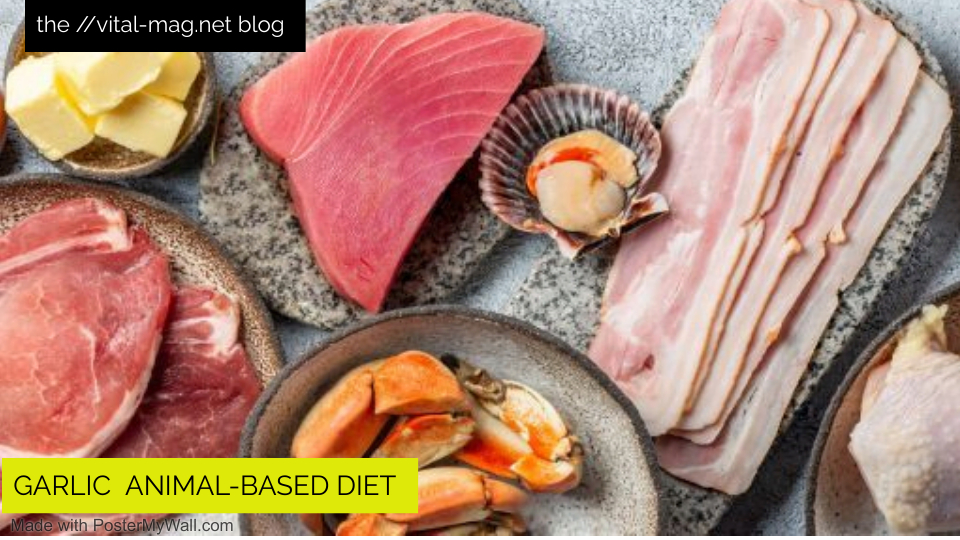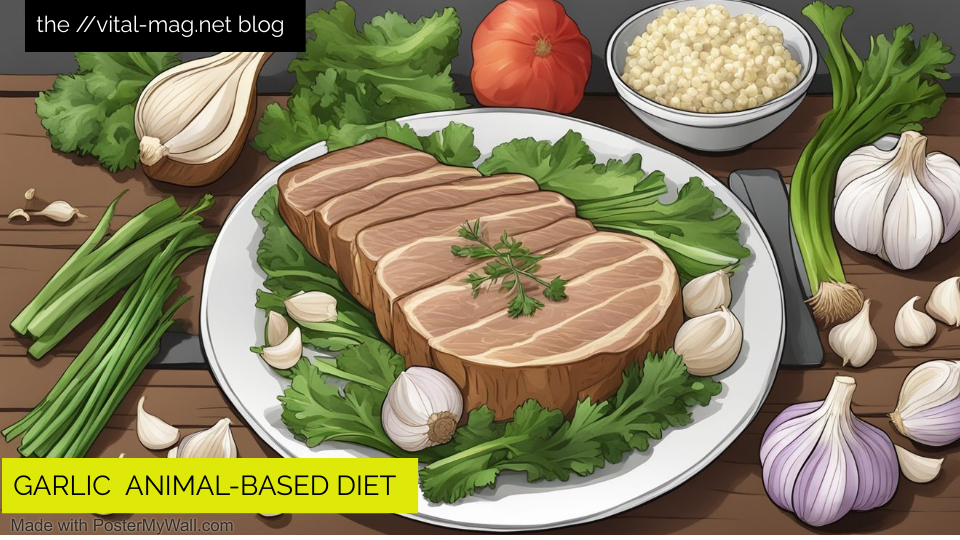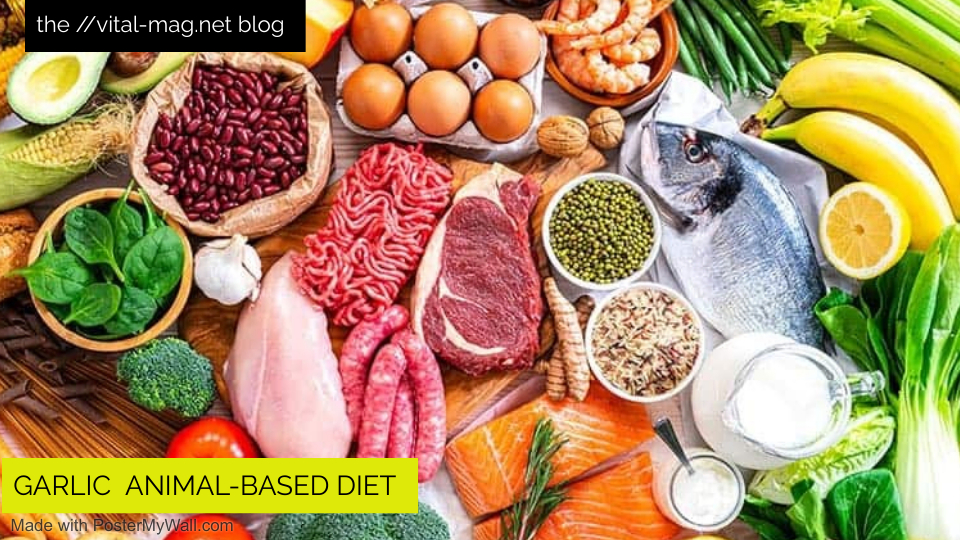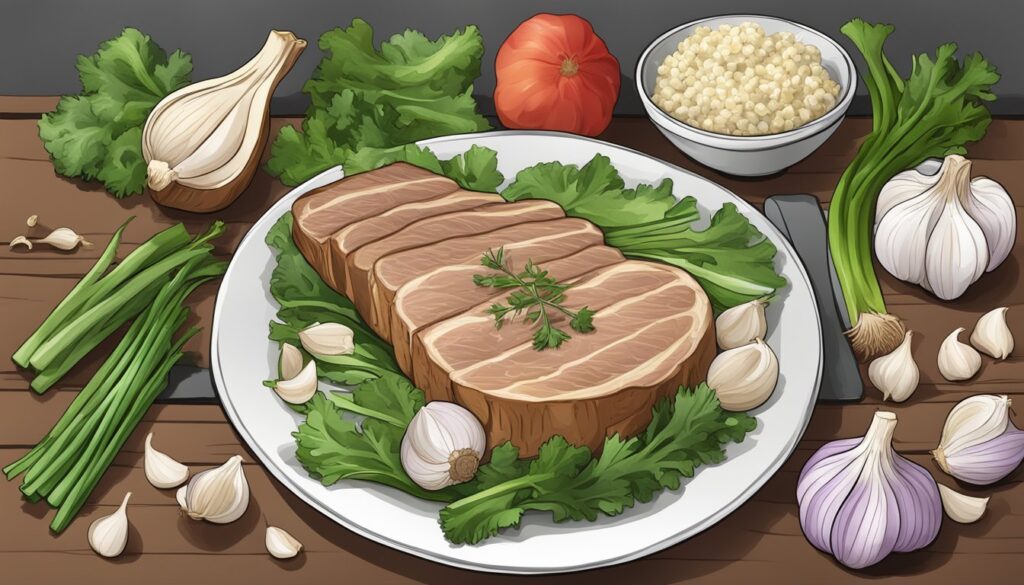The meat-Garlic Animal based diet is becoming popular for its focus on primarily consuming animal products while reducing or completely eliminating plant based food. Many people are attracted to this kind of diet because they think it will make them healthier, aid in digestion and help people live a more sustainable life.
So garlic has many health advantages such as supporting immunity, fighting inflammation, improving the condition of blood vessels etc., but still it’s a vegetable product. This situation poses a dilemma for those who strictly follow an animal-based diet.
In recent times, there is increased interest in understanding how plant foods like garlic are important for those who embrace the meat-based diets. This article will examine garlic’s nutritional value, its health benefits and arguments against or for including it into a carnivorous diet.
Key Points
- Overview of the Animal-Based Diet: A diet that emphasizes consumption of animal products over that of plant origin
- Role of Garlic: Is garlic part of an animal based diet? Should be answered due to man’s previous knowledge about plants wellbeing.
- Nutritional Benefits: Garlic’s rich nutritional profile and potential health benefits, particularly in the context of an animal-based diet.

Discovering Animal-Based Diets
The animal-based diet is focused on consuming a wide selection of animal products such as meat, fish, eggs and dairy while minimizing or eliminating intake of plant based foods. Often, people choose this approach because it has potential to improve health, decrease inflammation and increase the intake of high-protein, nutrient-dense food.
What To Include:
- Core principles: High-protein diet, nutrient-dense foods, whole foods.
- Comparisons: Carnivore diet, ketogenic diet.
- Common foods: Meat consumption, raw dairy, organ meats, grass-fed beef.
The animal-based diet differs from the carnivore diet which usually excludes all plant foods.
Garlic: A Divisive Addition
Garlic, despite being packed with health benefits, is a plant-based food, so it falls into a grey area of the animal-based diet. Some proponents of this diet claim that the health benefits of garlic like boosting immune function and reducing inflammation are just enough to warrant its inclusion in small doses.
What to include:
- The cultural and historical importance of garlic.
- Arguments for inclusion: Health benefits such as immune system support.
- Arguments against: Digestive problems due to eating and negative effects on gut flora.
The argument about whether garlic should be part of an animal-based diet often revolves around its potential impact on gut health. While traditionally known for its prebiotic nature which nourishes the gut microbiome, some people may have digestive issues.
Garlic’s Nutritional Facts
One of the richest sources of vitamins and minerals such as Vitamin C, Vitamin B6, manganese and selenium is garlic. Also included in the compound are bioactive substances like Alicen that have been proven to be antioxidants, anti-inflammatories and antimicrobials.
What should be covered:
- Nutrients: Vitamins (B6, C), Minerals (manganese), Alicen.
- Comparison: Nutrient density vis-à-vis animal products.
- Role in nutrient absorption and overall diet.
One key argument for including garlic in an animal-based diet is because it can complement the nutrients present in animal foods. For instance, while animal foods contain protein, fat soluble vitamins and fats excessively; there could be low levels of some vitamins for example vitamin C.

Health Benefits of Garlic
Garlic is well-known for its health benefits, which include reducing oxidative stress, supporting cardiovascular health, and boosting immune function.
What to include:
- Antioxidants: Garlic’s role in reducing oxidative stress.
- Cardiovascular health: Potential benefits in reducing blood pressure.
- Immune function: How garlic might boost immune health.
Despite these benefits, the inclusion of garlic in an animal-based diet remains a personal choice. For some, the potential health benefits of garlic may outweigh the risks, while others may prefer to stick to a strict animal-based approach that excludes all plant foods.
Potential Risks of Including Garlic
Some individuals may experience digestive issues, such as bloating, gas, or heartburn, when consuming garlic. Additionally, garlic’s prebiotic properties, while beneficial for some, may disrupt the gut microbiome in others, particularly those with sensitivities to FODMAPs (fermentable oligosaccharides, disaccharides, monosaccharides, and polyols).
What to include:
- – Digestive issues: Potential for gastrointestinal discomfort.
- – Gut health: Impact on gut flora and digestion.
- – Balance: How garlic might disrupt the nutrient balance of a meat-based diet.
For those with a strict adherence to an animal-based diet, the inclusion of garlic could also be seen as a deviation from the diet’s core principles.
How Garlic Could Fit Into an Animal-Based Diet
For those who wish to include garlic in their animal-based diet, there are ways to do so without compromising the diet’s principles. One approach is to use garlic sparingly, as a flavor enhancer rather than a staple food. By pairing garlic with nutrient-dense animal products, such as meat or fish, individuals can enjoy its flavor and potential health benefits while still adhering to the overall principles of an animal-based diet.
What to include:
- Occasional use: Use as a flavor enhancer in small quantities.
- Pairing: Combining garlic with animal-based foods for flavor.
- Balance: Maintaining diet principles while using garlic.
Another option is to use garlic in specific recipes that align with the goals of an animal-based diet. This approach allows for the inclusion of garlic’s flavor and potential health benefits while minimizing its impact on the overall composition of the diet.
Alternatives to Garlic in the Animal-Based Diet
For those who choose to avoid garlic, there are several alternatives that align with the principles of an animal-based diet. These alternatives can provide similar flavor or health benefits without the potential risks associated with garlic.
What to include:
- Animal-based alternatives: Bone broth, fermented foods.
- Approved herbs: Rosemary, thyme, which fit within the diet.
- Supplements: Nutritional supplements that mimic garlic’s benefits.
For example, bone broth can provide a rich, savory flavor that complements many animal-based dishes, while also offering gut-healing benefits. Fermented foods, such as sauerkraut or kimchi, can provide similar antimicrobial properties to garlic, without the potential digestive issues.

Testimonials and Anecdotal Evidence
There is a growing body of anecdotal evidence from individuals who have included or excluded garlic from their animal-based diet. Some people report improved health and well-being after including small amounts of garlic in their diet, while others find that excluding garlic helps them maintain better digestive health and overall balance.
What to include:
- Personal experiences: Health benefits or issues observed.
- Variation in results: Different outcomes depending on individual health.
- Preferences: How personal preference affects diet choices.
These testimonials highlight the importance of individual preference and personal experience when it comes to dietary choices. While some people thrive on a strict animal-based diet that excludes all plant foods, others may find that including small amounts of garlic enhances their overall health and well-being.
Also Read : CAN YOU DRINK MILK ON THE CARNIVORE DIET? BENEFITS AND SIDE EFFECTS
FAQs
Is garlic allowed on an animal-based diet?
Garlic is generally excluded from a strict animal-based diet since it’s a plant. However, some people choose to include it in moderation due to its potential health benefits.
What are the health benefits of garlic for those on an animal-based diet?
However, its inclusion in an animal-based diet remains debated, with some individuals experiencing digestive discomfort.
Conclusion
The debate around garlic in an animal-based diet highlights the importance of balancing tradition with modern dietary preferences. Garlic offers a range of nutritional benefits, including immune support and antioxidant properties, but its inclusion in a strict animal-based diet is not without controversy. Those who choose to include garlic may do so for its potential health benefits, while others may prefer to stick to the diet’s core principles, excluding all plant-based foods. Ultimately, the decision to include garlic in an animal-based diet comes down to personal preference and individual health goals






